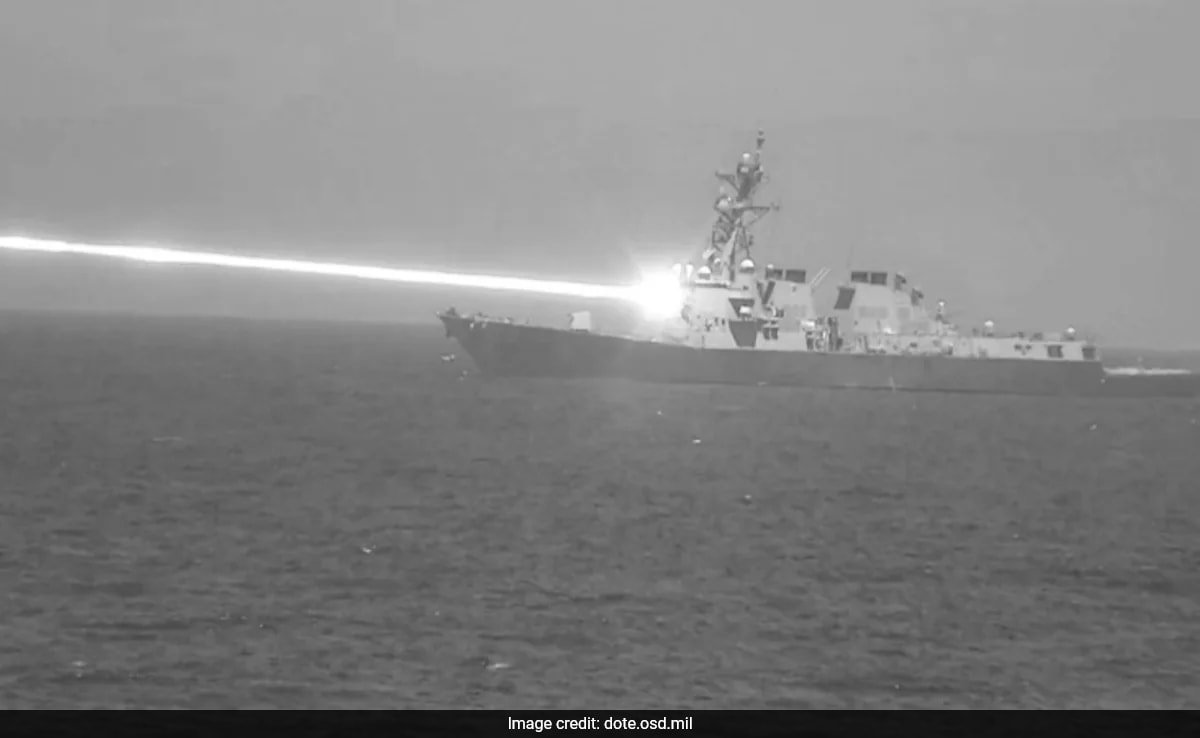
Washington:
The US Navy has successfully tested its High-Energy Laser with Integrated Optical Dazzler and Surveillance (HELIOS) system on one of its warships.
The test, which took place in 2024, is a major step in Washington’s efforts to deploy cost-effective laser weaponry to counter emerging threats.
The experiment was carried out aboard the Arleigh Burke-class destroyer USS Preble, as per a report.
What Is The HELIOS Laser?
Developed by Lockheed Martin, HELIOS is a high-powered laser weapon designed to neutralise threats like drones, fast attack boats, and even missiles. It offers two distinct modes of attack:
- Hard Kill – Directly destroying a target.
- Soft Kill – Disrupting electronic components to disable enemy systems.
Lockheed Martin describes HELIOS as having a “deep magazine, low cost per kill, speed-of-light delivery, and precision response.” The weapon can currently generate over 60 kilowatts of directed energy, with potential upgrades reaching 120 kilowatts.
What Was Tested?
The HELIOS system was used to zap an aerial drone, confirming its operational capabilities in a real-world setting. The exact date and location of the test remain classified, but the event was highlighted in the Pentagon’s annual Director, Operational Test and Evaluation (DOT&E) report.
A black-and-white photo from the report shows a streak of white light firing from the USS Preble into the sky, capturing the moment the laser engaged its target. The test aimed to validate the functionality, performance, and capability of the HELIOS system.
Why Does HELIOS Matter?
Lasers provide a cheaper and more efficient alternative to traditional missile defences, which rely on expensive ammunition. In regions like the Red Sea and Gulf of Aden, where Iran-backed Houthi rebels have been launching drone and missile attacks against US and allied warships, the need for advanced defensive technology has become urgent.
Vice Adm Brendan McLane pointed out in 2024 that the Navy lacked an operational laser weapon but emphasized that directed-energy weapons would help US warships counter asymmetric threats like those posed by the Houthis.
Challenges Ahead
Despite the successful test, the Navy has faced several hurdles in developing laser weapons:
- Power Supply Issues – Ships need a significant energy source to support high-energy lasers.
- Environmental Conditions – Fog, wind, and other weather conditions can impact laser performance.
- Integration with Existing Systems – Ensuring HELIOS works seamlessly with other onboard defences.
The Defence Department has invested $1 billion annually into high-energy lasers, but results have been slow.
The Navy has deployed eight Optical Dazzling Interdictor, or ODIN, laser dazzlers on destroyers, which focus on disrupting enemy sensors rather than direct destruction.
With HELIOS proving its effectiveness, the US Navy is expected to expand its directed-energy weapon programmes. The ability to disable drones and missiles cheaply, instead of using expensive interceptors, could change naval warfare, making future fleets more efficient and self-sustaining.








